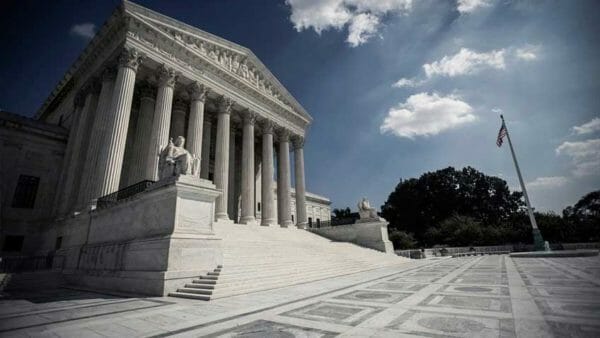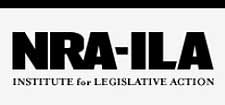
U.S.A. -(AmmoLand.com)- November 3 was a historic day for constitutional rights in the United States, as the U.S. Supreme Court delved into a detailed and sophisticated exploration of the meaning and scope of the Second Amendment’s right to “bear” arms in public places, in a case brought by the New York State Rifle & Pistol Association (NRA’s affiliated association in New York).
In 2008, the U.S. Supreme Court confirmed what was already clear to most Americans: the Second Amendment protects an individual right to keep and bear arms, including handguns, regardless of service in an organized militia.
In 2010, the high court ratified the equally straightforward principle that states and localities – and not just the federal government – are bound to respect that right.
Since then, however, the U.S. Supreme Court has remained virtually silent on the Second Amendment, with lower courts filling the vacuum by denying most Second Amendment challenges to gun control laws that came before them.
It took over 10 years for the high court to revisit the meaning of the Second Amendment in depth.
Last Wednesday’s argument proved worth the wait, with the right to keep and bear arms at long last being treated with the dignity and respect accorded other constitutional rights, a treatment notably lacking in many of the lower court cases.
As in the 2008 and 2010 cases, it took a particularly unusual and sweeping restriction to command the justices’ attention. Those earlier cases involved what amounted to outright bans on the possession of handguns. The current case, New York State Rifle, and Pistol Association v. Bruen, concerned New York’s may-issue regime for the licensing of concealed handgun carry, the state’s only lawful method for carrying a firearm outside one’s home for self-defense. New York’s scheme requires the presumptive denial of most applications, with only those showing an extraordinary need for self-defense that distinguishes them from the general population eligible for consideration.
In practice, this means that a New Yorker’s access to the Second Amendment right to bear arms depends on the person’s locality, the whims of local licensing officials, and – particularly in New York City – whether the person has been a public official or attained celebrity status. The right, in other words, is treated as a state-administered privilege for the few and the special.
The arguments in Bruen were notable for their length, depth, and the degree to which the gun control advocates defending the law departed from the more confident and sweeping assertions their counterparts typically make in the lower courts.
The justices heard nearly two full hours of argument by three highly-credentialed advocates. The resulting transcript is 136 pages long.
Representing the plaintiffs challenging the law was former U.S. Solicitor General Paul Clement, a man who has argued more cases before the Supreme Court than almost any lawyer alive today.
Defending New York’s law was New York State Solicitor General Barbara Underwood, and – in a special appearance on behalf of the Biden Administration – Brian Fletcher, Principal Deputy Solicitor General for the U.S. Department of Justice.
All of the court’s justices joined in the questioning of the litigants, with both sides being pressed to opine on complicated questions of law, history, and hypothetical scenarios.
The justices will certainly have their work cut out for them in sorting through the competing claims of the litigants and the numerous “friends of the court” that submitted briefs on a variety of topics. But several themes emerged during the argument that seemed to resolve issues that lower court cases (perhaps even disingenuously) treated as open questions, with the gun control side retreating from some of its bolder claims.
Underwood, for example, admitted on behalf of New York that, with regard to the Heller decision, she is “quite content to treat it as rightly decided” and has “no quarrel” with it.
More fundamentally, both Underwood and Fletcher are treated as a given that the Second Amendment applies to carrying firearms in at least some public places for purposes of self-defense.
The gun control litigants also agreed that the legitimacy of gun control laws primarily hinges on the history and tradition of arms regulation in the United States, rather than on a “balancing of interests” that allows judges to put their thumbs on the scale for whatever side they happen to prefer.
All parties agreed, in other words, that the relevant question in the case is not if law-abiding Americans have a right to carry firearms in public for self-defense but whether there are sufficient precedents in American history for limiting that right as drastically as New York has.
In admissions that may come back to haunt them, the gun control litigants acknowledged that New York’s scheme is, at the bottom, an attempt simply to restrict as much as possible the total number of firearms in the state, regardless of the risk profile of their possessors. Clement, however, retorted: “In a country with the Second Amendment as a fundamental right, simply having more firearms cannot be a problem and can’t be a government interest just to put a cap on the –the number of firearms.”
The justices also probed at length for answers about what sorts of restrictions would still be permissible if New York had to recognize a right to bear handguns publicly as a general matter. This seemingly would not have been necessary if the consensus was that New York’s current regulations are permissible.
There are, of course, no guarantees that any court case will go any particular way.
The most any litigant can hope for is to put forth their best arguments before judges who are willing to give them serious consideration and who will be thorough and professional in rendering a final decision.
There was every indication those thresholds were met in the Bruen oral argument.
That, for now, is a substantial victory in vindicating the Second Amendment, one that was made possible by the NRA and its members and supporters.
About NRA-ILA:
Established in 1975, the Institute for Legislative Action (ILA) is the “lobbying” arm of the National Rifle Association of America. ILA is responsible for preserving the right of all law-abiding individuals in the legislative, political, and legal arenas, to purchase, possess, and use firearms for legitimate purposes as guaranteed by the Second Amendment to the U.S. Constitution. Visit: www.nra.org

from https://ift.tt/2Ywle0S
via IFTTT

No comments:
Post a Comment